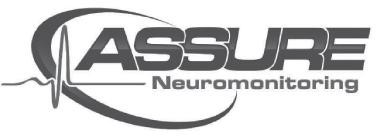The information in this preliminary prospectus is not complete and may be changed. We may not sell these securities until the registration statement filed with the Securities and Exchange Commission is effective. This preliminary prospectus is not an offer to sell these securities and it is not soliciting an offer to buy these securities in any state where the offer or sale is not permitted.
SUBJECT TO COMPLETION DATED SEPTEMBER 22, 2023
PRELIMINARY PROSPECTUS

ASSURE HOLDINGS CORP.
348,973 SHARES OF COMMON STOCK
This prospectus relates to the offering and resale by the selling stockholders identified herein of up to 348,973 shares of our common stock, par value $0.001 per share (the “common stock”), issued to such selling stockholders. The selling stockholders acquired their shares of common stock from us (i) in December 2022 as part of private placement of common stock in connection with an asset acquisition transaction that closed on December 30, 2022, and (ii) in August 2023 as part private placement of common stock in connection with an asset acquisition transaction that closed on August 29, 2023. Please see “Descriptions of Asset Acquisitions” beginning on page 96 of this prospectus.
We will not receive any proceeds from the sale of shares of common stock by the selling stockholders.
The selling stockholders may sell all or a portion of the shares of common stock beneficially owned by them and offered hereby from time to time directly or through one or more underwriters, broker-dealers or agents. Please see the section entitled “Plan of Distribution” on page 98 of this prospectus for more information. For information regarding the selling stockholders, see the section entitled “Selling Stockholders” on page 97 of this prospectus. We will bear all fees and expenses incident to our obligation to register the shares of common stock.
Our common stock is listed on the NASDAQ Capital Market (the “NASDAQ”) under the symbol “IONM”. On September 21, 2023, the closing price per share of our common stock as quoted on the NASDAQ was $0.27 per share.
Investing in our shares involves risks. You should carefully read the “Risk Factors” beginning on page 7 of this prospectus before investing.
We may amend or supplement this prospectus from time to time by filing amendments or supplements as required. You should read the entire prospectus and any amendments or supplements carefully before you make your investment decision.
Neither the Securities and Exchange Commission nor any other regulatory commission has approved or disapproved of these securities or passed upon the accuracy or adequacy of this prospectus. Any representation to the contrary is a criminal offense.
September ---, 2023


